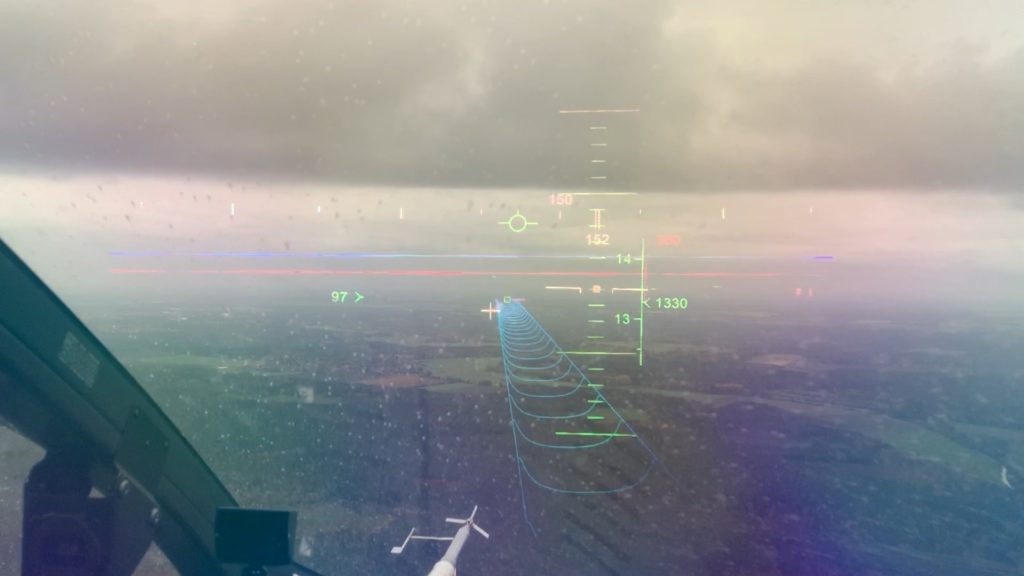Visual assistance system supports precise and safe helicopter operations
Helicopter manoeuvres in maritime environments under poor visual conditions are a demanding task for pilots. The German Aerospace Center (DLR) is researching the use of assistance systems to increase safety during flights over the open sea, at offshore wind turbines and during ship deck landings.
In the Helicopter Flight Safety in Maritime Environments (HELMA) and Helicopter Deck Landing Assistance (HEDELA) projects, researchers from the DLR Institute of Flight Systems have developed and tested a special symbolic display system for use in these challenging scenarios. The goal is to support pilots throughout the flight, including the provision of obstacle-free flight path planning of trajectories for approach, transit and departure. Augmented Reality (AR) headsets support the pilots in these tasks under low visibility conditions and superimpose orientation cues and important information such as airspeed, altitude and position, as well as the artificial horizon, directly into their field of vision.
The display icons were specially adapted to the relevant use cases and developed for use with a commercial vision system, the Microsoft HoloLens. The use of these AR headsets was initially tested in the Air Vehicle Simulator (AVES) at the DLR site in Braunschweig. Together with pilots from the German Federal Police Aviation Service, the overall system was evaluated in a maritime simulation environment and a reduction in workload as well as an improvement in situational awareness was observed. In 2020, the visual assistance system was integrated into the Active Control Technology / Flying Helicopter Simulator (ACT/FHS) research helicopter and the use of the AR headsets was successfully demonstrated in initial flight tests.
Links:
German Aerospace Center (DLR)
Institute of Flight Systems
Malte-Jörn Maibach · Email malte-joern.maibach@dlr.de
